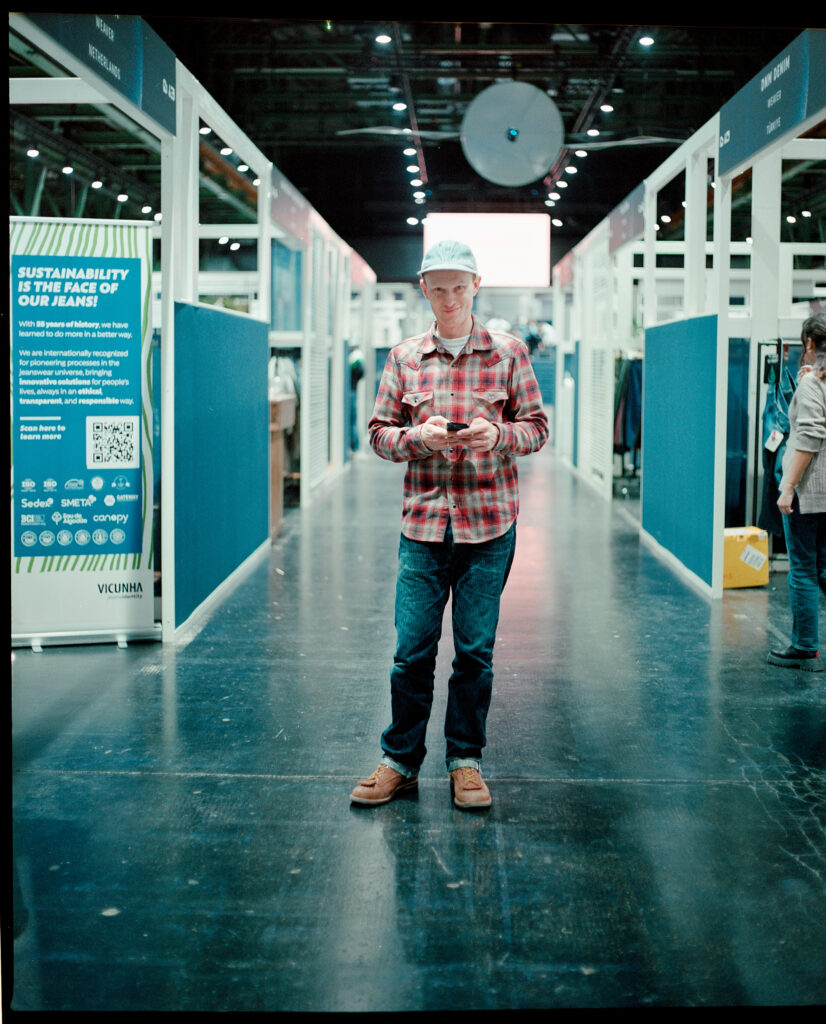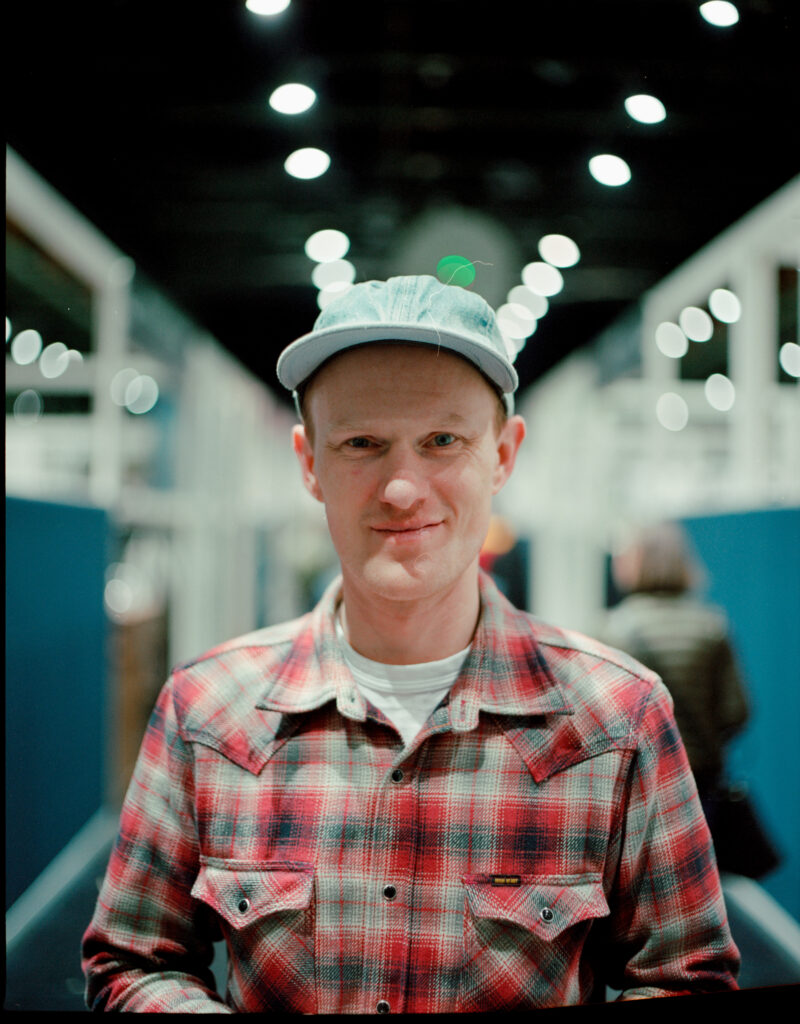
The Bluezone Q&A introduces
THOMAS STEGE BOJER
Name: Thomas Stege Bojer
Company: Denimhunters
Profession: Denim Marketing Consultant
Meet Thomas Stege Bojer, a multi-talented guy from Copenhagen, Denmark, with a knack for words and a love for denim. Thomas is not just a denim enthusiast but also an OG denim blogger and a marketing consultant. Beyond his professional life, he’s a family man who enjoys spending quality time with his wife and kids. Thomas loves to be at home, keeping himself busy with gardening, regular housekeeping, cooking, or doing the odd maintenance on his old wooden house, relishing the joys of being a part-time stay-at-home dad.
Aside from his denim obsession, work, and family life, Thomas’s heart races for BMWs. They have decided to go full-electric with their rides, making the selection a bit slimmer, but he currently owns and loves his fourth ‘Bimmer’, a fully spec’ed-out first-generation i3.
Thomas’s passion for denim traces back to his early childhood, as he fondly remembers exploring his father’s closet and admiring his Lee jeans when he was just 8 or 9 years old. From that point forward, his passion for denim grew, shaping him into the denim expert he is today.
We recently sat down with Thomas and talked about the world of denim and his place in it.

Q&A
Q: Could you please briefly share your background, experience, and roles within the denim industry?
A: Sure. So I already told you how I was digging around my father’s closet, inspecting his jeans, at an early age. I guess I always wore jeans, but I didn’t develop that true passion (some would surely say obsession) until my late teens. That’s when I really started paying attention to how my jeans faded, and I wanted to know why. Long story short that led me to start Denimhunters. At first, it was just a passion project; a way to share what I was learning. I’d be lying, though, if I said it wasn’t exciting to be one of the first to do that thing. Remember, this was back in 2011. Before Instagram and good cameras in smartphones were a thing. As an introvert, I also liked that I could hide a bit before the denim and the blog. I don’t really like to be the center of attention. With the success of Denimhunters, I was able to build a career, consulting for companies in the denim industry. And that’s pretty much what I’ve been doing since 2014 when I graduated with a degree in marketing from the business school in Copenhagen. (See how I managed to sneak my educational background in as well.)
Q: What initially attracted you to the world of denim and what keeps you passionate about it?
A: Fades. Simple as that. I love how the colour changes with wear and wash. And yes, I do wash my jeans every now and then, but that’s a different story, which you read (a lot) more about on denimhunters.com.
Q: Could you describe a typical workday in your professional routine, outlining the key activities and responsibilities that fill your schedule?
A: Being self-employed and effectively a part-time stay-at-home dad most days, I have a pretty set schedule. On a normal weekday, I’ll get up between 6:00-6:30, put on some coffee, and start prepping the kids’ lunch packs. Around 8:15 or so, I’ll have dropped off the rascals, and then I start cranking. After I’ve had another coffee. Then I do my thing behind the screen, whether it’s working on client projects or some of my own. No later than 15:30, I’ll go pick up the kids again and spend some quality time with them (which only occasionally involves watching TV to avoid screaming off each other). Then it’s dinner time and before you know if the day’s gone and we start over again.
Q: From your perspective, which current trends and innovative advancements do you consider to be the most significant in shaping the denim industry?
A: Consuming and making less. That’s the future and, I believe, the only real way to solve the challenge we all face, as an industry but also as a global community.
Q: Looking ahead, what will be the denim industry’s largest challenges and opportunities?
A: From my perspective, as a communicator and marketer, the biggest challenge I see most companies struggle with is how to get their message across and how to get their audience to care. That’s what I’ve specialized in helping my clients do (ahem, you can reach me at thomas@denimhunters.com).
The flip side of that is also the biggest opportunity, as I see it: Getting your audience to care; about what you do, about making a difference.
I guess this sounds like I’m holier than thou. I’m not. I buy way too many flannel shirts. And shoes. And T-shirts. Oh, and jeans. I eat meat for dinner, a few times a week at least. I don’t always remember to separate food waste from general waste when I cook – cuz, yeah, I’m lazy like that. I drink coffee. I stream TV (both with and without my kids). I sometimes even fly on aeroplanes. So I’m no saint by any means. But I don’t think we have to give it all up and live in caves again (although cave-fades probably would be pretty badass).
Q: If you had the opportunity to make a single change in the denim industry, what aspect would you choose to transform?
A: I really wish more consumers would wear their jeans more. Buy better garments that last longer and age better. But what’s that got to do with the industry? Well, I think you can fairly argue that consumers buy jeans that don’t last long and age well (at a low price) because the industry makes them.
Q: In your experience, how has the denim industry evolved over the last 20 years? What significant changes have you observed?
A: I’ve only been professionally part of the industry for a little over a decade. In that time, sustainability has become the topic. But no one’s really figured it out, have them? I mean, what is really sustainable? And how do you marry truly sustainable manufacturing and consumption practices with a goal to grow your year-on-year turnover and revenue. Can you?
Q: What is your opinion of the Bluezone shows and their impact on the denim industry?
A: The first time I was invited to the show by Sebastian and his team was in September 2016. My first book, Blue Blooded, had just been published a few months earlier, and it was well-received at the show. To celebrate that I sold all the copies I’d brought with me, I visited the BMW Museum, rented an M4 coupe (the F82) for a few hours, took it to the autobahn, and took it to the limit (250 km/h). Since then, I’ve been in love with Munich and Bluezone.
Q: As Bluezone celebrates its 20th anniversary, what message or sentiment would you like to convey to the organization as they mark this significant milestone?
A: Thank you. For going your own ways. For being persistent. For your hospitality. For giving me an opportunity to work with you.